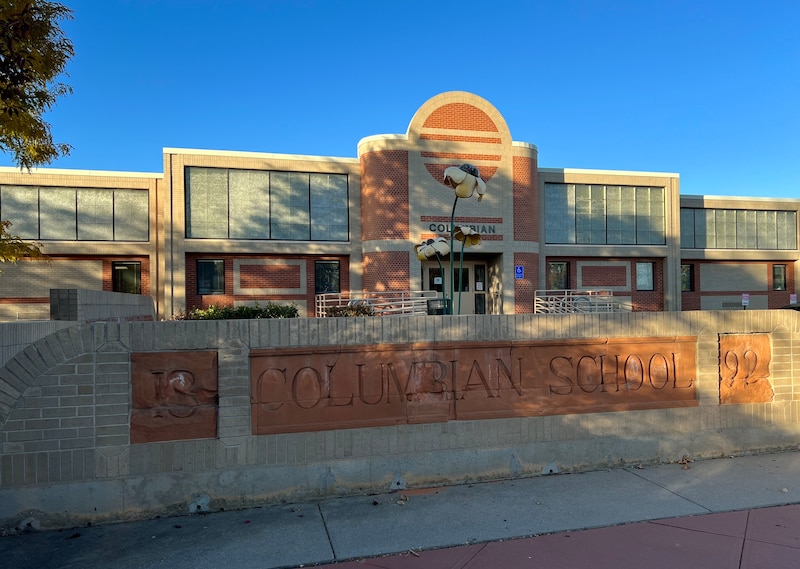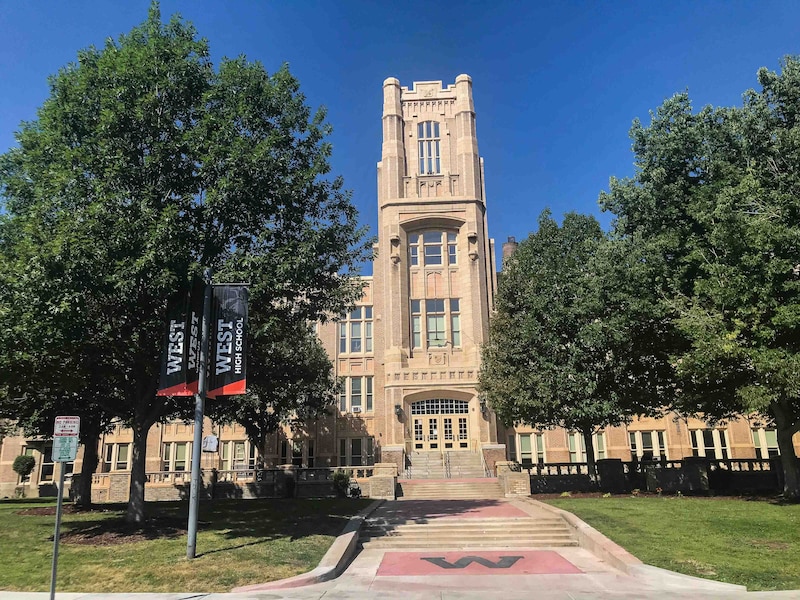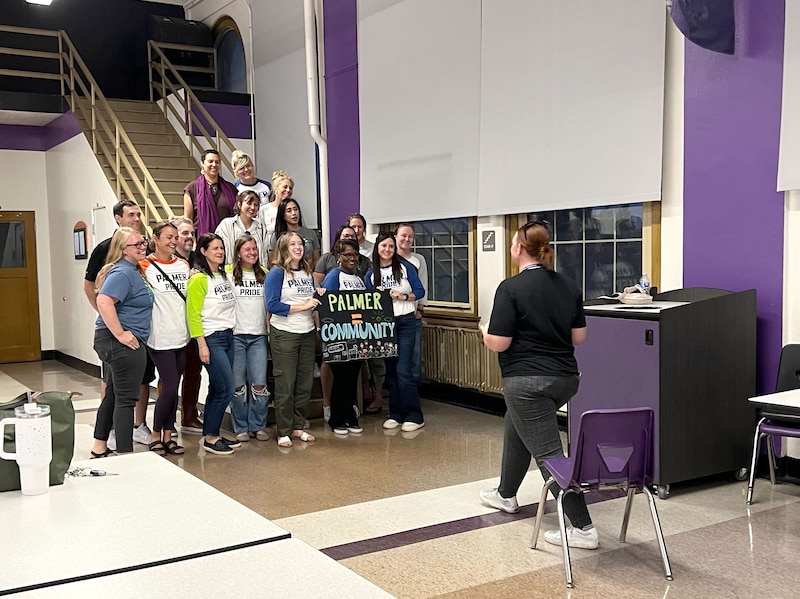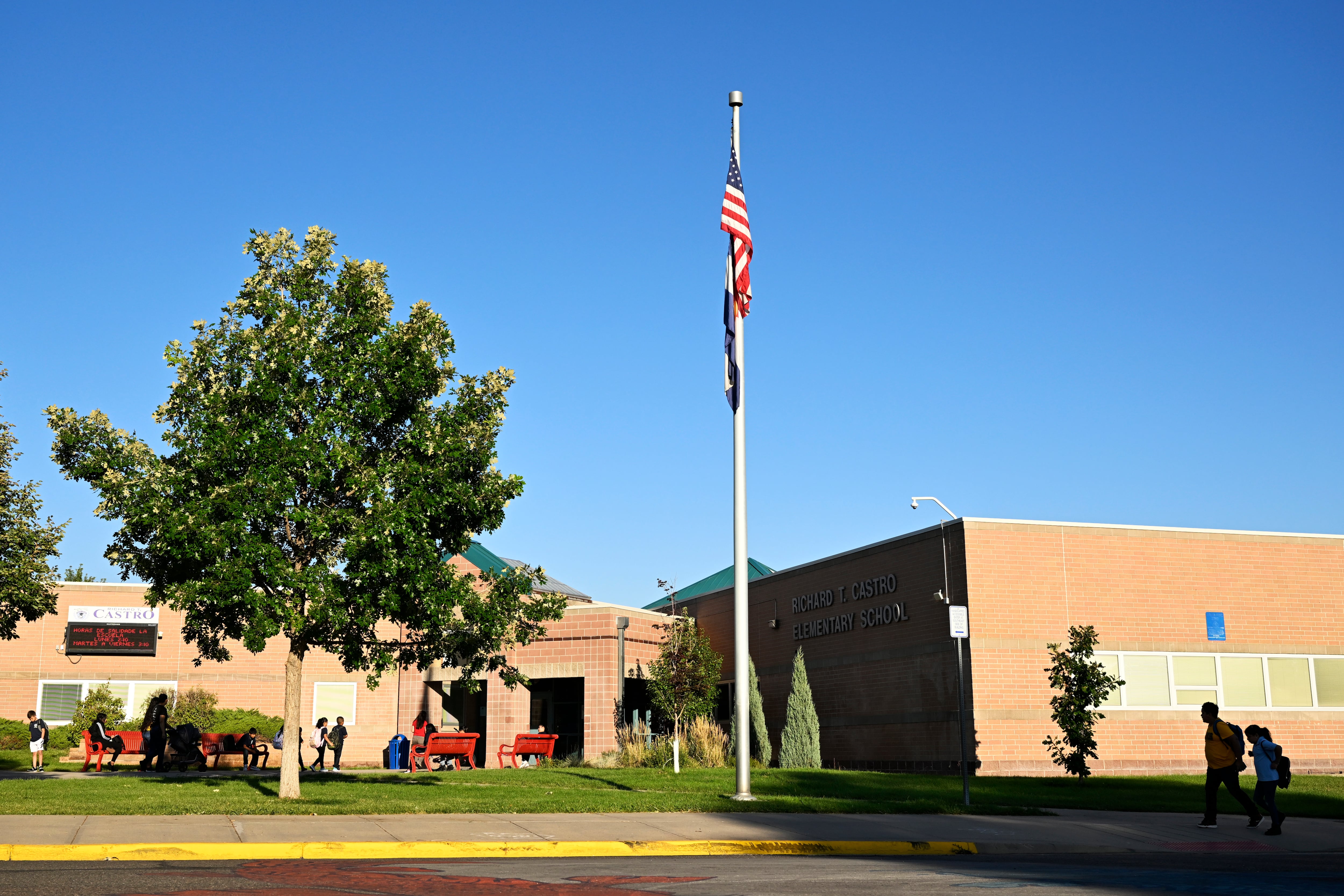Sign up for Chalkbeat Colorado’s free daily newsletter to get the latest reporting from us, plus curated news from other Colorado outlets, delivered to your inbox.
Five elementary schools, one middle school, and one high school would close if the Denver school board accepts a recommendation made by Superintendent Alex Marrero Thursday meant to address declining enrollment in Denver Public Schools.
Three other schools would be partially closed, meaning they would serve fewer grades.
The school board is expected to vote on the recommendation on Nov. 21. If the board votes yes, the 10 schools would close or partially close at the end of the school year.
The seven schools that would be closed are:
- Castro Elementary
- Columbian Elementary
- Denver School of Innovation and Sustainable Design
- International Academy of Denver at Harrington
- Palmer Elementary
- Schmitt Elementary
- West Middle School
The three schools that would be partially closed are:
- Kunsmiller Creative Arts Academy, which would lose its elementary school grades.
- Dora Moore ECE-8 school, which would lose its middle school grades.
- Denver Center for International Studies, which would lose its high school grades.
The partial school closures do not require a vote by the school board. Marrero has the authority to reconfigure a school without approval from the board.
The closures would eliminate nearly 4,000 vacant seats and save the district $29.9 million dollars, according to a district presentation. Since Denver funds its schools per-student, most of that money — $23.3 million — would follow students to their new schools. The district’s net savings would be $6.6 million in the 2025-26 school year.
Enrollment in Denver Public Schools peaked in 2019 and steadily declined in 2020, 2021, and 2022. In 2023, an influx of migrant students boosted the numbers. That increase has held this year, but district officials said it’s not enough to stave off school closures. They predict enrollment will fall another 9% between now and the 2028-29 school year.
The school board first acknowledged the need to close schools due to declining enrollment in 2021. But previous attempts were rejected by the board amid calls for more robust community engagement. The board eventually voted to close three small schools in the spring of 2023, while implying that more closures were coming. Earlier this year, board members passed a new school closure policy called Executive Limitation 18.
Like in the past, the recommended school closures would disproportionately affect students of color and those from low-income families, according to a district presentation.
Other metro area school districts, including Jeffco and Aurora, have also closed schools in recent years due to declining enrollment.

What would happen to the students who attend the schools?
The 10 Denver schools included in the recommendation serve 1,087 students, according to the presentation, which is a little more than 1% of the district’s approximately 90,0000 students. What would happen to those students is varied and complicated.
Instead of simply reassigning all students to new schools, Marrero’s plan calls for the creation and expansion of enrollment zones, which are large boundaries that contain several schools.
Students who live in enrollment zones choose from the schools in the zone. The district provides transportation to elementary students who live more than a mile from their zone school, and to middle and high school students who live more than 2½ miles away.
Those transportation rules would extend to all students in the newly created or expanded enrollment zones, not just the students from the closed schools, which district officials portrayed as a broader benefit of the recommendation. Within the new zones, students would get priority to enroll in their former boundary school.
Because of Colorado’s school choice law, students from the closed schools would not have to abide by the district’s reassignments. They could apply to attend any school in Denver, and district officials said all affected students would get priority to enroll in any school they want.
If the recommendation passes, here’s what would happen at each school.
Castro Elementary, which serves 237 students this year.
Castro would close and students would be reassigned to one of two nearby schools: Knapp Elementary or CMS Community School. Students who live north of West Kentucky Avenue would be reassigned to Knapp, and students who live south would be reassigned to CMS.
Columbian Elementary, which serves 143 students this year.
Columbian would close and students would be part of a new enrollment zone in northwest Denver. The zone would include Beach Court Elementary, Edison Elementary, Trevista at Horace Mann, and Centennial: A School for Expeditionary Learning. A special education program at Columbian would move to Trevista at Horace Mann.
Denver School of Innovation and Sustainable Design, which serves 60 students this year.
DSISD would close, but because it is an all-choice school and does not have a boundary, its students would not be reassigned to a specific school. Instead, they would be guaranteed a seat at their boundary school or a school in the enrollment zone where they live.
International Academy of Denver at Harrington, which serves 122 students this year.
IAD at Harrington would close, and students would be part of an enrollment zone in central Denver that would be expanded to include three more schools. The zone would include Swansea Elementary, Garden Place Academy, Wyatt Academy, Columbine Elementary, Cole Arts and Science Academy, Whittier ECE-8 School, and University Prep — Arapahoe Street. A special education program at IAD at Harrington would move to Garden Place Academy.
Palmer Elementary, which serves 150 students this year.
Palmer would close, and students would be part of a new enrollment zone in central-east Denver. The zone would include Teller Elementary, Steck Elementary, Carson Elementary, Montclair School of Academics and Enrichment, Lowry Elementary, and Denver Green School Southeast.
Schmitt Elementary, which serves 127 students this year.
Schmitt would close, and students would be part of a new enrollment zone in southwest Denver. The zone would include Godsman, McKinley-Thatcher, and Asbury elementary schools.
West Middle School, which serves 186 students this year.
West Middle School would close, and students would be guaranteed a seat at any school in the existing enrollment zone. District officials hope many West Middle students would enroll at Denver Center for International Studies in the Baker neighborhood, located just a half mile away, which would become a middle school under the recommendation.
Denver Center for International Studies, which serves 210 high school students this year.
DCIS Baker, as it’s known, would lose its high school grades and become a middle school only. DCIS Baker high school students would have a seat at West High School, located just a half mile away. DCIS Baker’s programming would move to West High School, as would a high school special education program currently located at DCIS Baker. The new DCIS Baker Middle School would become part of an existing enrollment zone in west Denver.
Dora Moore ECE-8 School, which serves 62 middle school students this year.
Dora Moore would lose its middle school grades and become an elementary school only. Because its middle school is an all-choice school and does not have a boundary, students would not be reassigned to a specific school. Instead, they would be guaranteed a seat at their boundary school or a school in the enrollment zone where they live. District officials hope many Dora Moore students would enroll at Morey Middle School, which is less than a mile away. Morey currently shares its building with DSISD and would have more space if DSISD closes.
Kunsmiller Creative Arts Academy, which serves 128 elementary school students this year.
Kunsmiller would lose its elementary school grades and become a middle and high school only. Because Kunsmiller is an all-choice school and does not have a boundary, its students would not be reassigned to a specific school. Instead, they would be guaranteed a seat at their boundary school or a school in the enrollment zone where they live.

Why were these schools identified for closure?
District officials said they considered several criteria when deciding which schools to recommend for closure. The first two were whether the school is located in an area of the district that is experiencing declining enrollment and whether the school’s seats are 65% full or less. According to a district presentation, 70 schools met the first two criteria.
The district then clustered schools that met the criteria with other nearby schools. Within each cluster, the district looked at several factors to determine which schools to recommend for closure. The factors included the school’s enrollment, whether the school was a popular choice with neighborhood families, and the school’s academic rating.
For instance, Columbian Elementary was in a cluster with three other elementary schools in northwest Denver. Of the four schools, Columbian had the lowest building utilization rate at 38% of seats filled, the lowest enrollment at 143 students, the smallest kindergarten class at 20 students, and the lowest rating. Based on how students scored on state tests, Columbian earned a state rating of turnaround, signified by the color red.
District data show that 13 students “choiced in” to Columbian from outside the boundary this year, while 31 students who live in the boundary “choiced out” to other schools.

What happens next?
“This is not a done deal,” Denver school board President Carrie Olson said in an interview after the recommendation was announced Thursday.
“All of us are hoping to be able to hear directly from people in the schools,” she said. “We’re interested to know what they’re thinking about what Dr. Marrero has presented and what would they like us to hold Dr. Marrero accountable to.”
The board is set to vote on the recommendation in two weeks, a tight timeline that has drawn criticism from parents, education advocacy groups, and the teachers union.
Next week, board members are scheduled to meet with affected principals, teachers, and families before, during, and after school.
The board will hold a special one-hour public comment session at each of the 10 schools recommended for closure or partial closure. It will also hold a more general public comment session on Nov. 18.
“What you heard tonight is it‘s going to be incredibly hard,” Olson said of the board’s decision. “And this is what we’re here to do, what we’ve been elected to do, is make hard decisions and listen to our constituents.”
Marrero is set to meet with staff and families at the affected schools the week of Nov. 18.
Teachers at any closing schools who have earned Colorado’s version of tenure will be guaranteed a one-year position next school year.
Teachers who haven’t earned Colorado’s version of tenure won’t be offered a one-year position unless they teach special education, middle or high school math, or work with Spanish-speaking students who are learning English. All three are high-need positions in which the district routinely has shortages.
In a statement Thursday, Denver Classroom Teachers Association President Rob Gould said many educators “are understandably anxious about the future of their positions.” He said the union would be tracking “the number of educators from closed schools that are actually hired into open positions.”
If the board approves the school closures, its policy says “the community will be engaged in the discussion of future utilization” of any vacant school buildings.
Melanie Asmar is the bureau chief for Chalkbeat Colorado. Contact Melanie at masmar@chalkbeat.org.






